
Effective testing practices are necessary for the software development life cycle as they ensure your product meets high quality standards.
However, experience has shown that the costs associated with traditional testing methods can be significant.
Here is where shift-left testing comes into play. Shift-left testing is an increasingly popular software testing approach that is both efficient and highly cost-effective.
If you’ve heard about this method and want to learn more, or are considering changing your current testing practice, read on.
This article will explain shift-left testing and its benefits and discuss the best practices for implementing this approach.
Table of Contents
What is shift-left testing
Shift-left testing is a principle that shifts testing to the “left” within the software development life cycle (SDLC).
This approach has quality assurance (QA) teams continuously testing the application as early as the requirements analysis and planning phase of development.
Testing then continues during the design and development phases until the product is finally released.
This approach is based on the Agile methodology and follows the concept of beginning testing activities earlier, in contrast to the traditional method, where testing is held off until the development of the software is finished.
We can visually represent shift-left testing like this:

As testing happens parallel to planning and development, your organization can save a lot of time by having your developer team and QA specialists work in sync, with the QA team often helping the developers detect potential bugs and addressing them before they are even coded.
And this is the main purpose of shift-left testing—finding and preventing defects early in the software development process before they become difficult and expensive to manage.

Get unreal data to fix real issues in your app & web.
Through close collaboration of testers and developers, the app’s quality can improve while reducing the time needed to hit the market.
This approach to testing is not new by any means—the term shift-left testing was coined by Larry Smith in 2001.
Still, it’s only recently that organizations saw the many advantages of this approach and started utilizing it in their projects.
In the following sections, we will, hopefully, convince you that your organization should implement it as well.
Why is shift-left testing recommended
Shift-left testing is an approach with many benefits in terms of cost and efficiency, and your competitors are most likely already using it in their practice.
In fact, according to an Applause survey, 86% of respondents said their organization uses this approach to do their testing.
And they use it for a good reason, as the respondents of the same survey list multiple benefits of this approach.
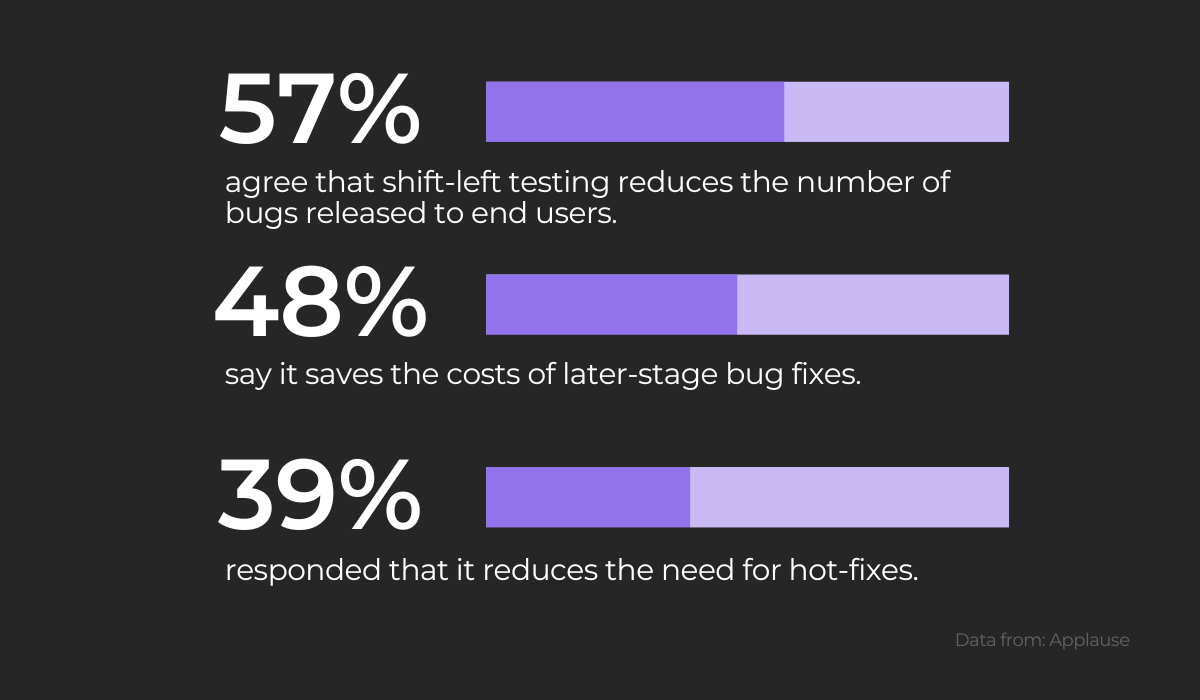
When asked how shifting left has helped their QA and dev teams, respondents generally agreed that this approach helped create a more bug-free product while lowering the costs of fixing bugs if any were found.
How does shifting left lower costs, you may ask?
Well, most defects are introduced in your app during the requirements-gathering phase of development—64% of the total defect costs, to be more precise.
The traditional development approach doesn’t address this fact and traditional testing practices call for implementing tests after all the coding is done—shifting the work of QA teams to the very “right”.
However, according to well-known data, this approach can make costs rise quickly, especially when a high-severity bug is found late in development or, even worse, after you launch your app.
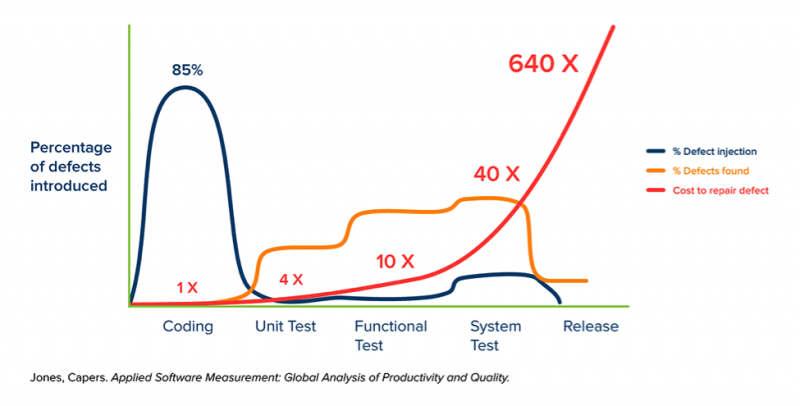
As you can see, the costs of finding bugs rise exponentially when they are detected later in the development process and can get up to 640 times higher if you don’t catch them by the time your app is released.
If caught early, on the other hand, bugs cost relatively little to fix.
Shift-left testing does precisely this—helping you find more bugs early on by including QA specialists before your app is even coded and testing it from the beginning of the SDLC.
With these benefits, you can see how shift-left testing can help your company create a more high-quality product in a shorter amount of time while saving resources by dealing with issues early on.
How to implement shift-left testing
The benefits of this approach may have gotten you interested in recommending shift-left testing to your organization.
If you wish to implement this method, the QA department might need to make many changes, especially if your organization currently employs a shift-right approach.
To help you get started with shift-left testing, we give you three changes your organization might have to make to transition to this method.
Enforce coding standards
As the QA team will test your developers’ code from the earliest possible stage in the software development cycle, the code needs to be properly written to avoid giving testers a more challenging time than necessary.
As a development team lead, you can implement this first tip and have your team follow strict coding standards while working.
Coding standards are a set of guidelines that developers follow to ensure their code and, in turn, their software, is of high quality.
Whether you will develop coding standards specific to your organization or follow the best practices, the main goal is creating clean code that is:
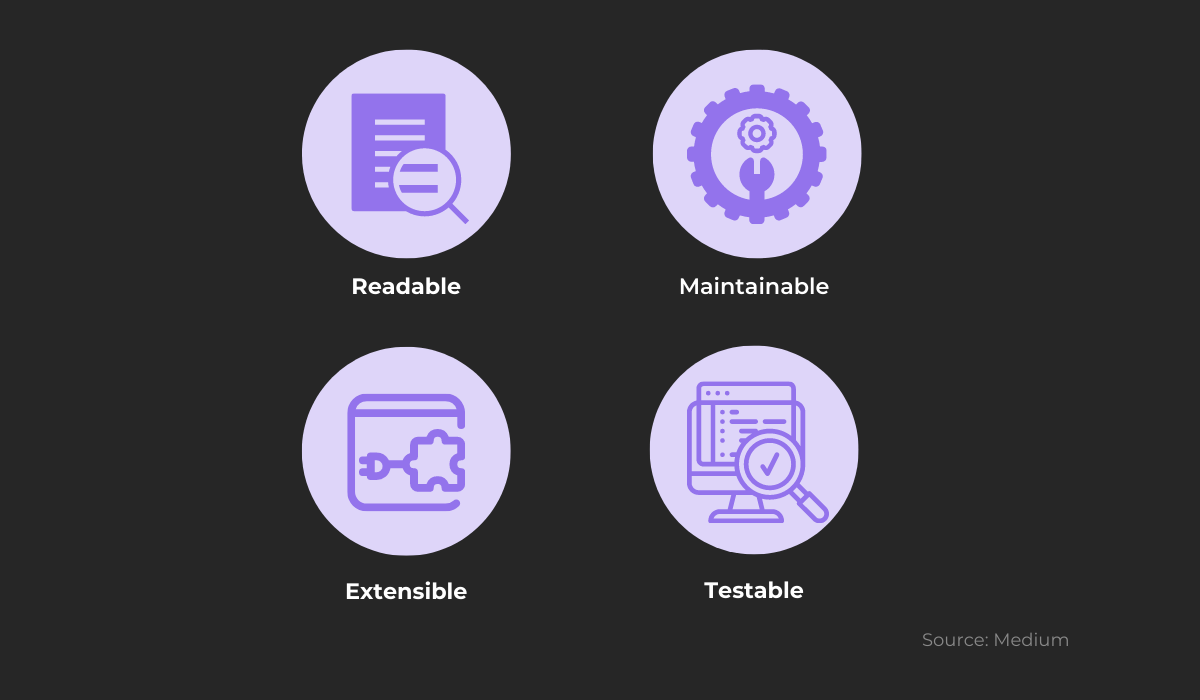
Quality code is easily readable—written so that it can be easily understood by any developer working on the application.
The code will be well-structured, simple, and concise, making it more maintainable—allowing developers to easily introduce changes without the risk of breaking it.
Clean code is also extensible—you can effectively scale it and it can handle new features being added to it without being negatively affected.
Finally, well-written code is testable and easily verifiable—and your QA teams can easily subject it to automated testing.
These characteristics of clean code reduce the volume of bugs and help you get the most value out of shift-left testing, eliminating as many defects as possible, as soon as possible.
Start testing in the early stages
The basic foundation of shift-left testing is that QA teams should test your app at the earliest possible time in the development cycle.
By doing this, you can gain the main benefit of shift-left testing—the reduced cost of fixing bugs when detected early.
To implement this approach, your organization might need to make some changes in how test teams interact with your development team and introduce QA specialists early in development.
One way to test early is by following the Agile development methodology. Agile is an approach that is highly test-driven and focuses on testing early and often.
Agile development has your teams work in small increments, called sprints, that tackle specific development issues in small increments, instead of doing large chunks of work at the same time.
During each of these sprints, which can last anywhere from 1 to 4 weeks, teams work collaboratively to speed up their workflow and tackle issues in a flexible manner instead of linearly.
Testing is continuously carried out, and feedback is given and used instantly, often leading to quick changes in the development process.
Represented visually, this process looks something like this:
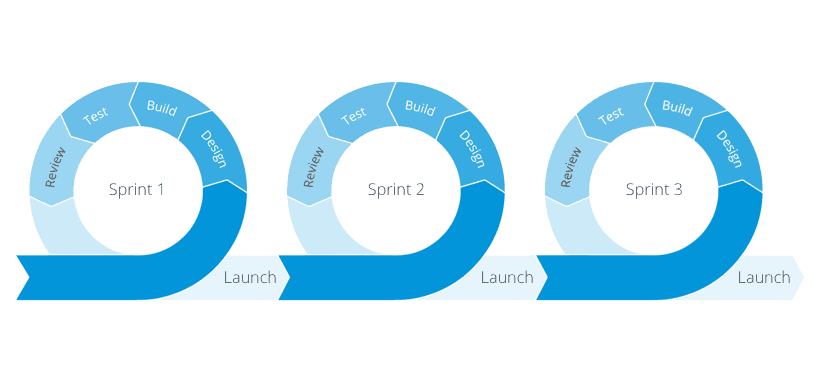
Agile development promotes testing from the planning stage of development and as often as needed—usually during each phase of the sprint.
Tests are prioritized throughout the development process by using approaches such as test-driven development (TDD).
In TDD, test cases are written for each function that needs to be implemented in the application before developers write a single line of code.
After the test case is written, developers need to write just enough code to make the test pass—coding as little as possible and making clear, simple code that just works.
TDD is an effective approach with many benefits, as 92% of developers think that it leads to higher-quality code.
Starting testing early in the development process makes it less likely that your developers introduce defects into your application, by reducing the number of bugs to begin with, and thus saving costs and resources down the line.
Automate your tests
Another essential principle of shift-left testing is testing often. The purpose is to catch bugs and defects continuously and in different phases of development.
To make this process more efficient, your QA team might want to consider automating some of the tests that they use most often.
This practice is considered essential for implementing shift-left testing as it provides multiple benefits that support this approach:
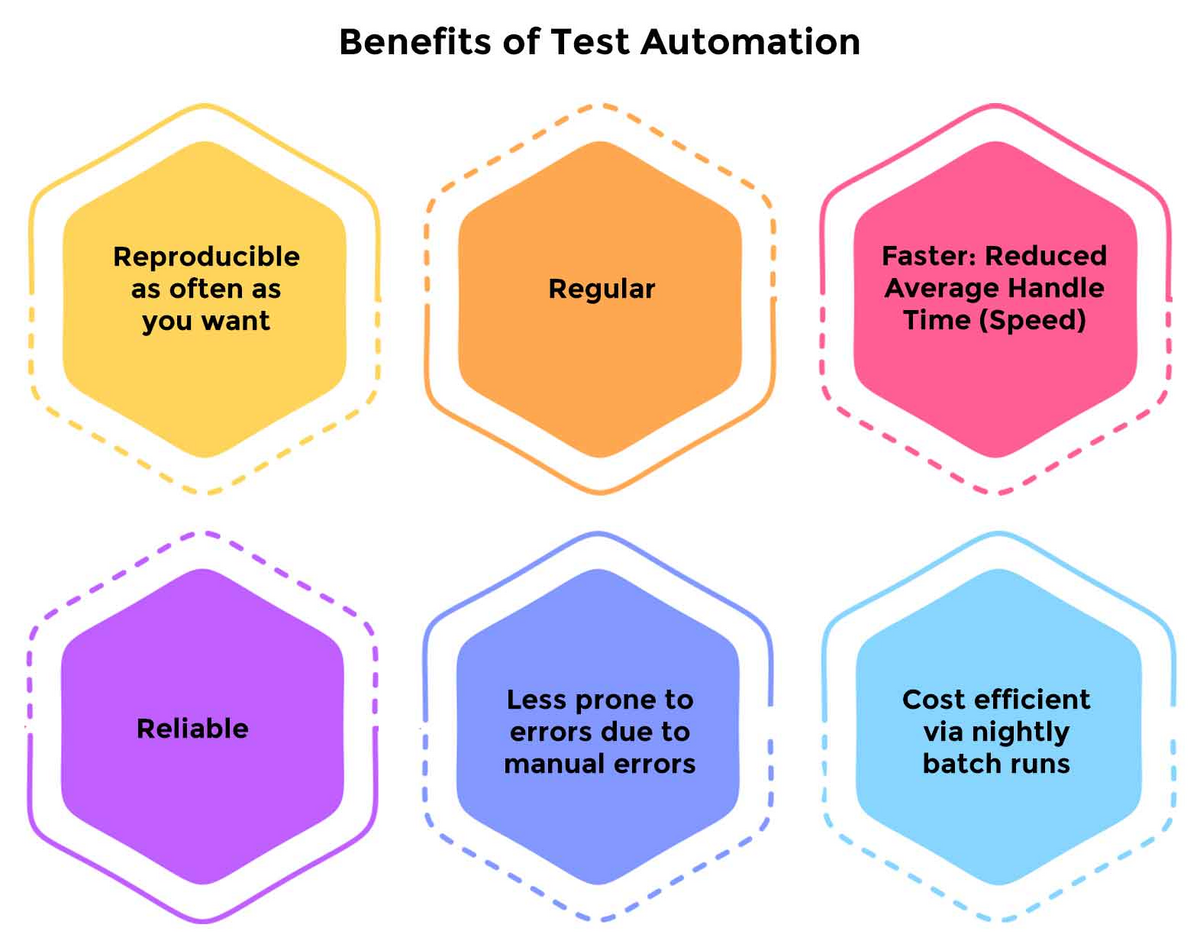
Shift-left testing calls for continuous testing, and many of the conducted tests can be repeated multiple times in different stages of development.
Instead of repeating these tests manually, creating automated tests can be a more reliable and cost-effective way to handle this process.
Test automation is a faster testing process that minimizes human error and can increase test coverage while giving testers more time to work on difficult software issues that require their manual input.
There are many tools that can help QA teams implement automated testing—both open-source tools such as Selenium and Watir and paid tools such as Unified Functional Testing (UFT One).
Although developing automated tests comes with its own set of challenges, the benefits outweigh the downsides.
Once created, these tests can be run repeatedly and at much higher speeds than manual ones, while incurring no additional costs.
Because it reduces the time necessary to run the tests and allows testers to check code throughout the development process with minimal effort, automated testing is a vital element of the shift-left approach.
Conclusion
Shift-left testing is a useful approach to testing that allows dev and QA teams to find software defects earlier while trying to lower the number of bugs they introduce into the code in the first place.
Hopefully, this article has given you a better understanding of shift-left testing and its many benefits.
We recommend you consider implementing this practice as it can significantly improve your teams’ efficiency and software quality.
By following some of the tips we included in this article, you can slowly start moving towards this testing method and save your organization valuable time, money, and frustration while dealing with bugs.




